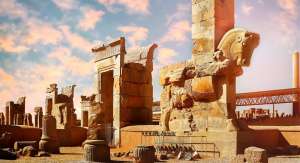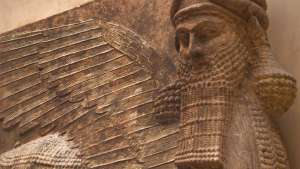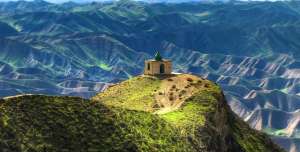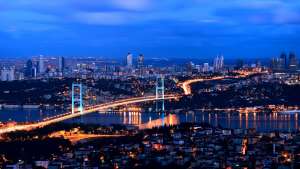Famous for its magnificent architecture and warm hospitality of the locals, Iran is known to be one of the friendliest countries. The country speaks of ancient civilisations and glorious days of the past. With lovely gardens and thriving bazaars, it is one of those countries in the Middle East that should be on every traveler’s list.
Iran with 24 UNESCO World Heritage Sites is among the top 10 countries with the most Cultural Heritage Sites in the UNESCO’s World Heritage List in the year of 2020. Iran’s UNESCO sites include cultural (22 sites) and natural (2 sites). There are also 14 intangible cultural heritages that are inscribed in Iran’s UNESCO World Heritage Sites.
It’s interesting to know that by 2020, more than 1120 sites have been listed on the UNESCO World Heritage and millions of tourists visit these fascinating sites and monuments annually. As you know, World’s Cultural Heritages belong to the whole world not only to one country. It’s also worth mentioning that the places listed on this list belong to all humans on earth, regardless of race, nationality, religion, and it is the duty of states and governments to make every effort to protect and preserve these monuments.
So, it is necessary to know the world’s cultural heritages. Here are 22 sites of Iran UNESCO Heritage sites in 2020:
World Heritage Site, Isfahan
1. Naghsh-e Jahan Square (Meidan-e Emam)

UNESCO introduces it as “one of the largest city squares in the world and an outstanding example of Iranian and Islamic architecture.” Naqsh-e Jahan which means the image of the world is located in Esfahan. Esfahan itself is called “Nesf-e Jahan” which means half of the world. Even the names can show the importance of Esfahan and Naqsh-e Jahan. The square is surrounded by bazaar and stores. On the north, Qeysarieh Portico (gate) is situated which is dated back to the 15th century. The rest of the square is built in the early 17th century including Shah Mosque (Imam Mosque) to the south, Ali Qapu Palace to the west, and Sheikh Lotf-Allah to the east. Each of namely buildings is a breathtaking masterpiece.
World Heritage Site, Fars
2. Persepolis

When the Persian emperor, Cyrus the Great, walked in Babylonia in the first millennium B.C., he commanded to let people to pray for their own gods and even released the Jewish prisoners. Persepolis is the capital of very liberal Achaemenid emperors. Achaemenid emperors Darius I (522-486 BCE), his son Xerxes I (486-465 BCE), and his grandson Artaxerxes I (465-424 BCE) built a splendid palatial complex on an immense half-natural, half-artificial terrace. Persepolis Complex includes majestic approaches, monumental stairways, throne rooms (Apadana), reception rooms, and annex buildings is classified among the world’s greatest archaeological sites, among those which have no equivalent and which bear witness of a unique quality to a most ancient civilization.
World Heritage Site, Khuzestan
3. Tchogha Zanbil

The ziggurat at Tchogha Zanbil remains to this day the best-preserved monument of this type and the largest one outside of Mesopotamia. Ziggurats are stepped pyramidal temples in Mesopotamia and Khuzestan, Iran during the second and first millennium B.C. The ziggurat originally measured 105.2 m on each side and about 53 m in height, in five levels, and was crowned with a temple. Mud brick was the basic material of the whole ensemble. The temple was built by Elamite kings and dedicated to Elimite gods Inshushinak and Napirisha.
World Heritage Site, West Azerbaijan
4. Takht-e Soleyman (Throne of Solomon)

Takht-e Soleyman is where natural and architectural wonders meet. It is a ritual complex built around a natural lake in altitudes, on top of a mountain in the northwest of Iran. Takht-e Soleyman includes a Zoroastrian fire temple, a temple dedicated to Anahita (the divinity of the waters), and a Sasanian royal sanctuary. This site was destroyed at the end of the Sasanian era but was revived and partly rebuilt in the 13th century.
World Heritage Site, Kerman
5. Bam and its Cultural Landscape
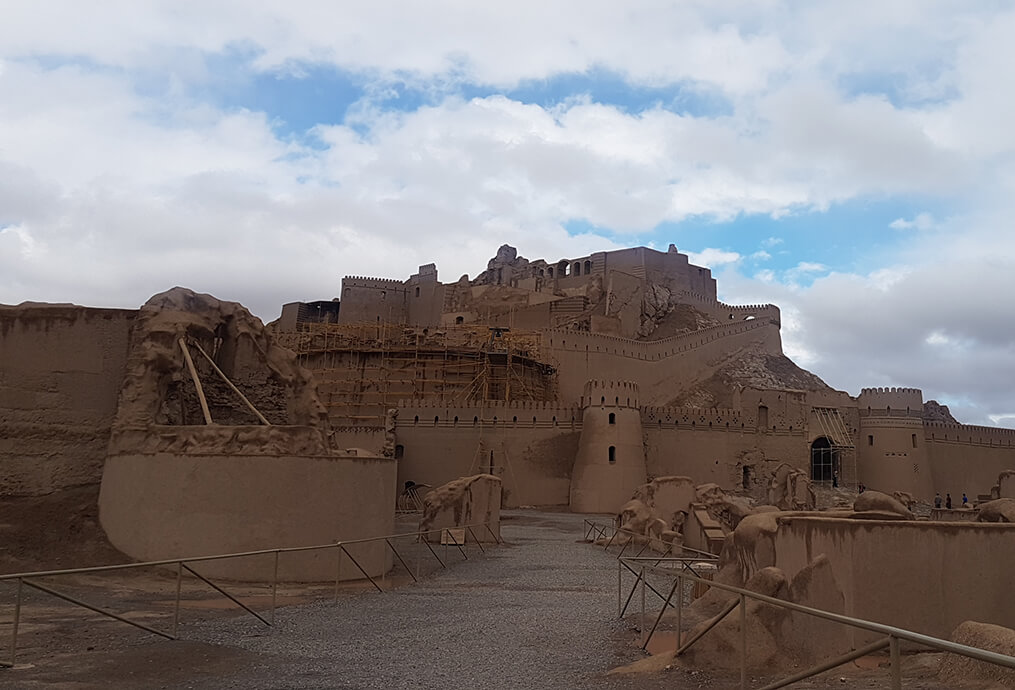
Arg-e Bam is the most representative example of a fortified medieval town built in vernacular technique using mud layers (Chineh) which is typical to Iran. Bam flourished during 7-11 centuries as it was at the crossroad of the famous Silk Road connecting the east to the west and the north to the southern waters. But it is originally dated back to the 4th to 6th centuries B.C. This impressive construction undoubtedly represents the climax and is the most important achievement of its type not only in the area of Bam but also in a much wider cultural region of Western Asia.
World Heritage Site, Fars
6. Pasargadae

Pasargadae had been Persians’ homeland before Cyrus the Great turned it to his capital. Achaemenid emperors are believed to be the first emperors who respected other nations’ cultures, beliefs, and human rights in general. Their remains including Pasargadae show it very well. These remains include the mausoleum of Cyrus the Great which is a stone-built structure in 6 steps (11m height in total) and a room on the top where the mausoleum actually is.
World Heritage Site, Zanjan
7. Soltaniyeh Dome
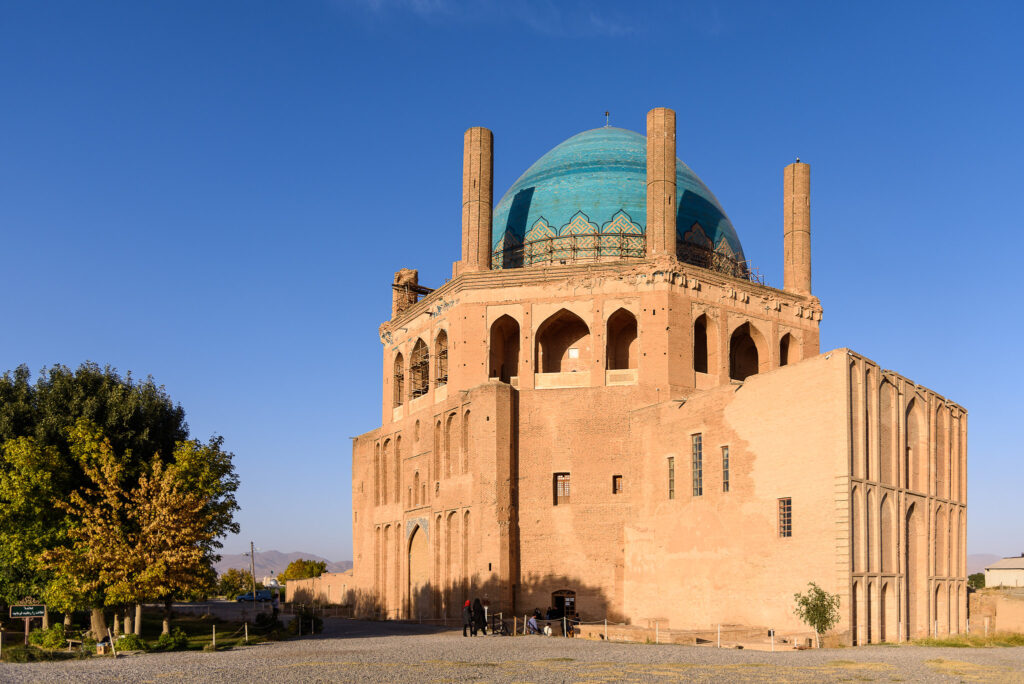
Soltaniyeh is the mausoleum of the Ilkhanid king, Soltan Uljaitu, built in the early 14th century. This building has the third biggest dome in the world. The first one is Santa Maria del Fiore, Florence, and the second one is Hagia Sofia, Istanbul. Also, Soltaniyeh’s dome is the oldest double-shelled dome which is a well-known technic in Perso-Islamic architecture. Furthermore, its interior architecture is very unique, corridors and stairs link the halls and rooms and make this building even more mysterious.
World Heritage Site, Kermanshah
8. Bisotun
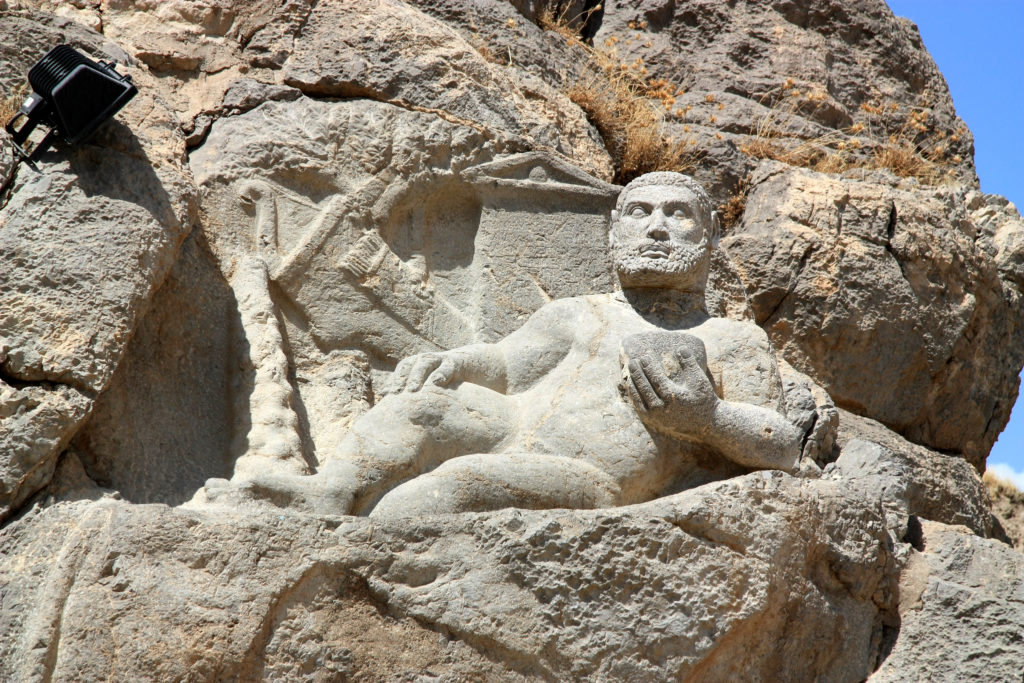
Bisotun which means the place of gods is a mountain on the main route to Mesopotamia. This mountain embrace remains from Pre-History to the Islamic era. For example, there are two caves dated back to Paleolithic, an Achaemenid bas-relief depicting Dariush the Great and his nine defeated enemies. Also, there are three Parthian bas-reliefs and a Hellenistic statue of Hercules. In addition, as it is mentioned before, Bisotun is located on an important route connecting Iran to Mesopotamia, so, there are also two Islamic caravansaries. Namely, objects are only some of the remains that can be found in Bisotun.
World Heritage Site, West Azerbaijan & East Azerbaijan
9. Armenian Monastic Ensembles of Iran
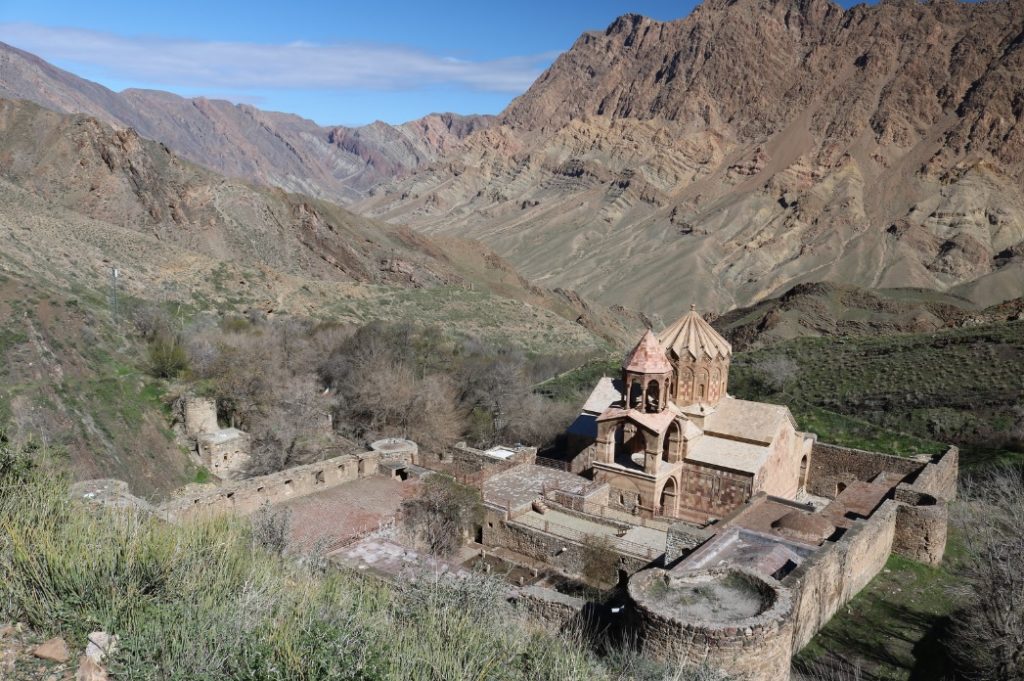
Exactly on the borders of Armenia and Iran, two churches and one chapel have shaped an exceptional cultural landscape between the mountains. St Thaddeus Church is the oldest one which is dated back to the 7th century. The other church is called St Stepanos. Its construction date is still a matter of discussion but archaeologists believe it was first built in the 7th century and was re-constructed during the Safavid period. Plus to two churches, there is a chapel called Dzordzor founded in the early 14th century. Today, it is located on top of a mountain in front of a lake but it was removed from its original place, where is 600m away, in the late ’80s due to dam construction.
Armenian Monastic Ensembles show the interchange between Persian, Armenian, and Byzantium cultures and architecture.
World Heritage Site, Khuzestan
10. Shushtar Historical Hydraulic System

The Shushtar Historical Hydraulic System is a homogeneous complex of water management relating structures including bridges, dams, canals, and cascades. In fact, it is a synthesis of diverse techniques brought together to form a remarkably complete and large-scale ensemble. It has benefited from the ancient expertise of the Elamites and Mesopotamians in canal irrigation, and then that of the Nabateans; Roman technicians also influenced its construction.
World Heritage Site, Ardabil
11. Sheikh Safi Al-din Khānegāh and Shrine Ensemble

The Sheikh Safi al-Din ensemble is a prototype and an outstanding example of a 16th-century religious complex, combined with social, charitable, cultural, and educational functions, which contains all the significant elements that since came to characterize Safavid architecture and became a prototype for other khānegāh and Sufi shrines. This complex is also a museum of Islamic art. Because Safavid kings were highly dedicated to their ancestor, Sheikh Safi, so, each of them added a new part or decoration to the complex.
World Heritage Site, East Azerbaijan
12. Tabriz Historic Bazaar Complex
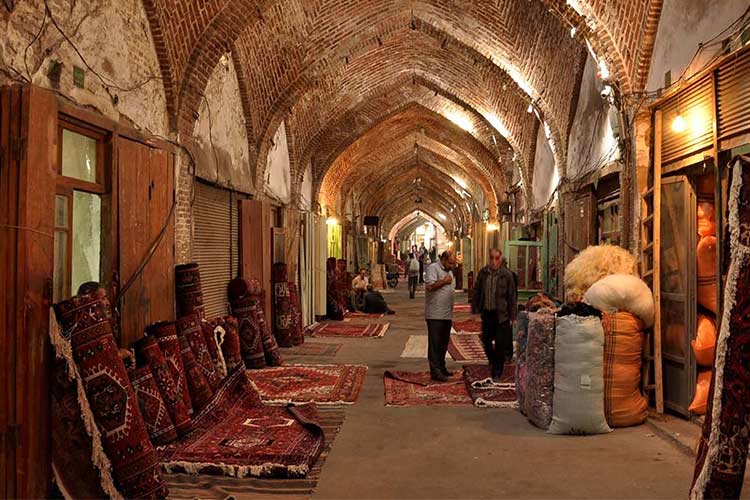
The bazaar of Tabriz is one of the oldest and longest closed bazaars in the Middle East. Tabriz always has been an important commercial center in the west of Asia where merchants from Caucasia, Istanbul, Europe, Armenia, and the mainland of Iran sold and bought goods.
The bazaar which is a brick made is a part of a complex including Jame Mosque and Ali-Qapu Palace, the residence of Qajar princes. Thereupon, it was not only a commercial center but also a cultural interchange and socio-political center.
World Heritage Site, Iran
13. The Persian Gardens

The Persian Garden or Pardis, which means a secret garden behind a wall, is the root of the word paradise in English. The oldest example of Persian Garden is the garden of Cyrus the Great in Pasargadae in the 6th century B.C.
Persian Garden is divided into four sections which is called Chahar Bagh, and water runs between these four sections. Actually, what makes Persian Garden unique and exceptional is its very specific water management system and the contrast that this water management and a green garden makes with its dry and desert environment.
World Heritage Site, Golestan
14. Gonbad-e Qābus

Gonbad-e Qābus is a masterpiece and outstanding achievement in early Islamic brick architecture due to the structural and aesthetic qualities of its specific geometry. It is a ten pointed star tower ends up to a conical roof. It was built around 1007 A.D. for Sultan Qābus of the Ziyari dynasty. This tower is one of the tallest brick made towers in the whole world and inspired other latter mausoleum towers is the west of Asia and Anatolia.
World Heritage Site, Isfahan
15. Masjed Jameh of Isfahan

It is said that Jame Mosque of Isfahan is the museum of Islamic decorative arts which is true! Because since very early time after Islam, the construction of this mosque has begun and became a model of four court-yard mosques for latter mosques in Central Asia. Even today, each monarch adds something new to the building of the mosque.
World Heritage Site, Tehran
16. Golestan Palace

Golestan Palace in Tehran, the current capital of Iran and Qajars’ capital, is undoubtedly the masterpiece of Qajar arts and architecture. It was originally founded by Safavids but expanded and flourished in the Qajar era as the royal residence. Golestan Palace is decorated with glazed bricks and mesmerizing tile works. The interior design of some of its halls is done by brilliant mirror works. Briefly, Golestan Palace is where you can totally feel the old Tehran.
World Heritage Site, Sistan and Baluchistan
17. Shahr-i Sokhta

Shahr-i Sokhta which means the burnt city is an archaeological site in Zabol, southeast of Iran dated back to 3200 B.C. This site is a good example of very early cities and transition from rural life to urban. The is seemed to be rich due to luxury objects found in the excavations including precious and semi-precious stones, the first artificial eye and onyx wares. Furthermore, a skeleton was found which shows surgery remains.
World Heritage Site, Kerman
18. Cultural Landscape of Maymand

Maymand is an ancient village where you still can find a Neolithic rural lifestyle. people are semi-nomadic agro-pastoralists and living in rocky and handmade houses with a history that goes back to 12000 years ago. In other words, Maymand village is an outstanding achievement of the genius of human art in the distant past, in such a way that with minimum facilities, they made an amazing heritage. This village after many years has remained relatively intact and has a high resistance to heat and cold which is a result of being dug underground.
World Heritage Site, Khuzestan
19. Susa

The proto-urban and urban site of Susa bears testimony, from the late 5th millennium BCE to the first millennium CE, to important interchanges of influences, resulting from ancient trade connections and cultural exchanges between different civilizations, namely the Mesopotamian and Elamite. Susa has been identified as the focal point of interaction and intersection between the nomadic and sedentary cultures. It played a key role in creating and expanding technological knowledge and artistic, architectural, and town planning concepts in the region.
World Heritage Site, Iran
20. The Persian Qanat

During history, lack of water always has been a problem for Iranians whose subsistence used to be mostly based on agriculture. So, they had to be creative and hardworking to be able to manage their water sources. Qanat is undoubtedly the smartest invention in water management history. Qanat is a system included in a chain of water wells and a horizontal canal conducting water from its source to the settlements on lowlands. In each Qanat, there is a mother well which is dug where the groundwater source actually is. Then, moqanies (those who dig qanat) dig a horizontal canal to where people want to use the water. Other wells are for digging and having access to the horizontal canal and also using its water.
World Heritage Site, Yazd
21. The Historic City of Yazd
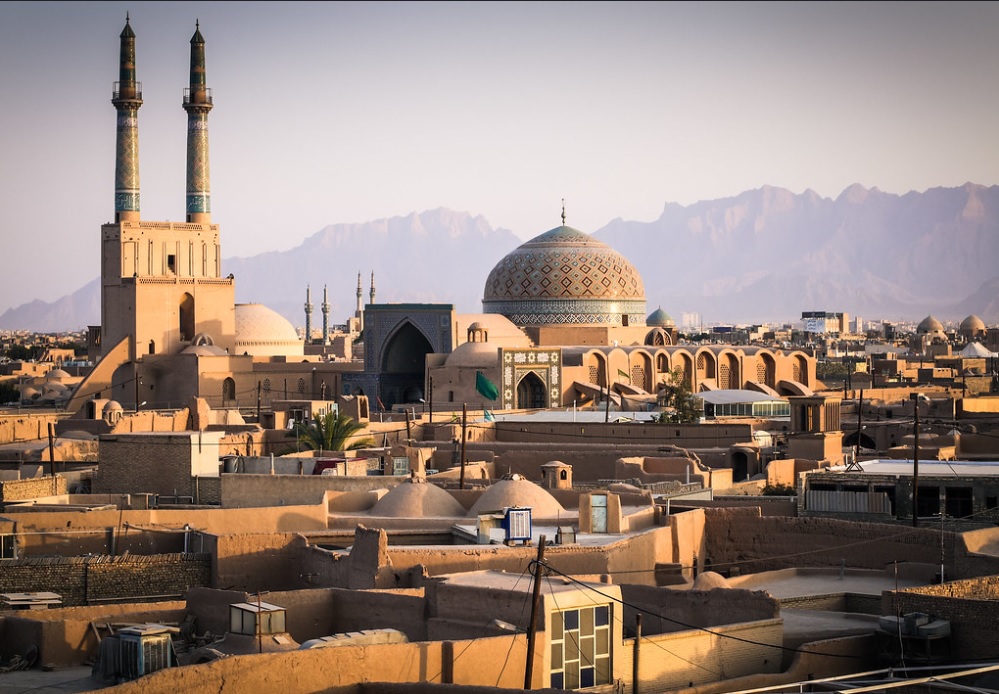
Are you fascinated by One Thousand and One Nights stories? Do you like to take a walk to the edge of history? Are you a daydreamer? So, Yazd is a “must-see” for you! Yazd is a city in the heart of the desert that owes its existence to Qanats. Buildings are earth-made and usually have a courtyard and one or two wind-catchers. Wind-catcher is a traditional air conditioner that obviously works by catching winds and directing them into the interior part of the building. Earth-made buildings, courtyards, wind-catchers, and qanats in the heart of the desert make an exceptional landscape especially in the sunset when the colorful sky makes a stark contrast with the ochre city.
World Heritage Site, Fars
22. The Sassanid Archeological Landscape

Fars was once the homeland of Achaemenids and also Ardeshir Papakan, the founder of the Sassanid dynasty. Ardeshir Papakan chose Fars as his capital. Two cities, two palaces, one castle, and some rock reliefs and sculptures left from the Sassanians (224-651 AD). Ardeshir Khureh is a round city that became a prototype for further Sassanid and early Islamic cities. Sarvestan Palace, Firuzabad Palace, and Qale Dokhtar (Maiden Castle) show early technic of dome building on a four-angled room.
The Sassanid archaeological landscape represents a highly efficient system of land use and strategic utilization of natural topography in the creation of the earliest cultural centers of the Sassanid civilization.

